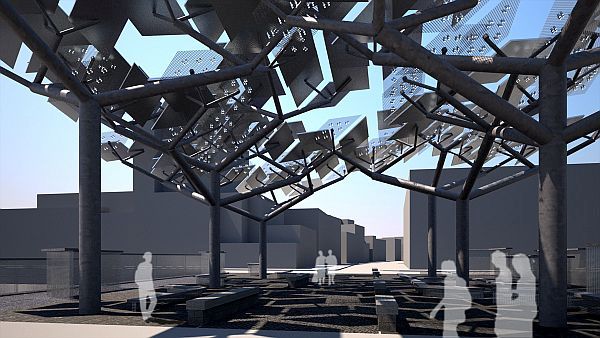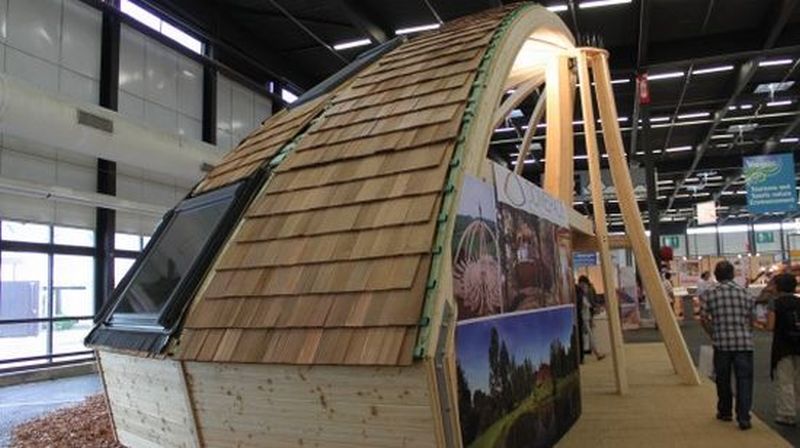Nowadays, there’s a great buzz about buildings being nature-friendly. However, did you ever wonder what’s the most natural thing in the world? Well, it is nature itself. Nothing can beat it with that. Nature, no matter whether it is plants or animals, they contribute positively to the environment. In fact, growing forests is the most viable solution for global warming. Furthermore, they also maintain some sort of balance, which ensures that things would go on the way they are going for a long time. But we humans are quickly disturbing this very balance. We are coming up with artificial structures, which, just like us are greedy and don’t contribute positively to the environment. However, there’s a way we can stop this balance from deteriorating further. By following, nature-inspired architecture, we can make sure that just like nature our buildings also contribute positively to the environment.
9 – Best examples of nature-inspired architecture
Nature has always been a source of inspiration for humans and when it comes to solving complex architectural design problems, architects seek shelter from it to understand and learn the natural way of dealing with things. The process in which inspiration from nature and its elements like trees, plants, hills, etc. determines the course of architecture, has been termed as ‘biomimicry’. Learning from nature not only helps in solving design-related problems but allows integration of sustainability for constructing eco sound structures.
1. Fake Hills Mad Architects

The architecture firm ‘Mad Architects’ is the designer of fake hills. It is a housing society that takes the shape of hills, and its aim to be part of the city of Beihei. The buildings have undulated roofs and cuts that maximize the view of the dwellers. The design draws inspiration from nature when it comes to sustainability. The shape of the building allows automatic cleaning of the air. Sunlight filters through the structure naturally, making the building energy efficient without the use of electricity.
2. ITC Corporate Towers by HKS

The new headquarters of ITC is being developed and designed by HKS. Their main focus is on sustainability, with the ultimate aim of obtaining LEED Platinum certification. The key features of the 26 stories tall building includes accommodating green vegetation that is free to grow upwards, two to three folds. For lighting and heat regulation, the building will use a double skin system which prevents heat of the sun from entering the building, and simultaneously it will permit full use of sunlight. The building has a pyramid slope to act as a chimney. This chimney will draw wind through the building and the operable windows will provide cross ventilation.
3. Gaudi’s masterpiece

While working on his masterpiece, Barcelona’s Sagrada Familia, Antoni Gaudi turned to nature for inspiration. The ornamental structure of the building has a roof designed in the shape of a magnolia leaf. Other nature inspired elements of the building include spiral stairways, honeycomb gates, gargoyles depicting animals, pinnacles in the form of grasses and diatom-shaped windows.
4. Cultural center of meudon la foret
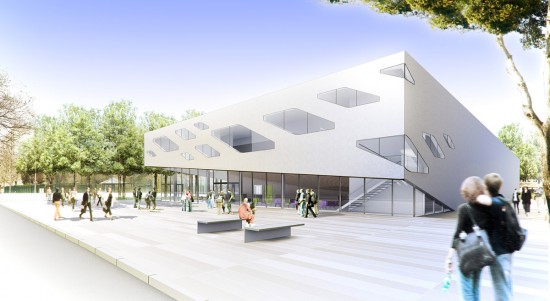
The community center of Meudon La Foret in France is the brainchild of y Serero architects. It yet another piece of nature-inspired architecture. The building uses organic concrete shells for the walls, which are fragile looking, but indeed strong. For lightning, the slope of the building has photovoltaic cells. The shape of the building takes the form of canopy with trapezoidal windows, which allows ample light.
5. Pini@Pigneto

The design presented by GOMMA designs takes the shape of trees with its leaves that have actual solar panels. These solar panels have a little bit of tilt with mathematical calculations for each to receive maximum light without shadowing the neighbor. The numerous trees that make the structure connect to each other at the top for support. The design serves a dual purpose; firstly, it provides shade to the commuters during day, simultaneously charging the photo cells, and secondly lights the LED lamps from the energy thus conserved during day.
6. House by Undercurrent Architects
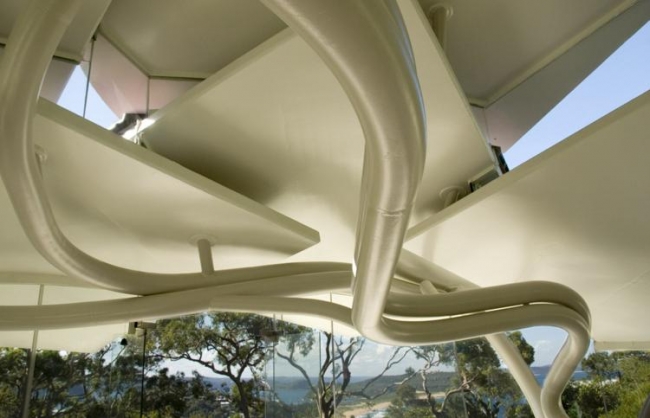
This private residential complex in Australia is designed by Undercurrent Architects and is hooked with nature via leaves. The roof of the villa looks as if fallen leaves corner each other with plantation all around. Fine thin glasses molded in the shape of leaves surrounds the leaf house and limit the heat from the sun to reduce energy consumption, simultaneously allowing maximum penetration of sun light. The cottage blends with the landscape and you feel of being in a garden while sitting inside.
7. Enota Hotel Ribno
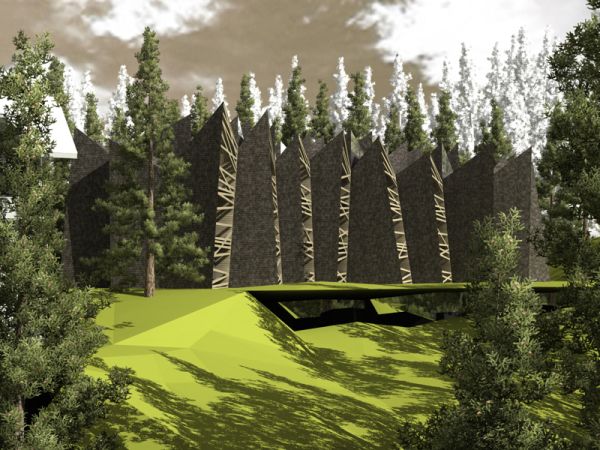
They started with commercial setup and ended on what is called, a camouflage. The designers of the hotel were asked to make it in a way that it looked like a part of the landscape and not as a flashy sight. Designers created a hotel with peaks looking more like mountains. The hotel’s rooms were made at lower level with peaks serving the purpose of halls for meetings and parking. The self sustainable design accommodates latest facilities for the residents.
8. Cactus-inspired building for MMAA’s new office in Qatar
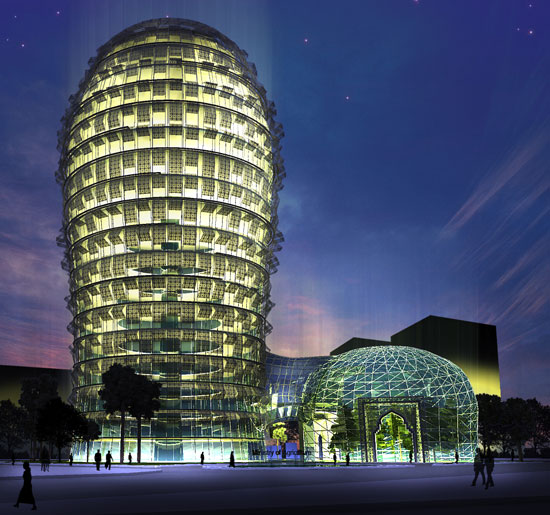
Next-gen architecture would not only be sustainable, but will also be a beautiful example of how eye-striking architecture can blend with nature and the environment. Bangkok-based Aesthetics Architects Go Group has designed a new office building for the Minister of Municipal Affairs and Agriculture (MMAA) in Doha, Qatar. Due to its distinct shape, they are calling it the Cactus Project.
Inspired by the ability of cacti thriving in a desert, the energy-efficient structure features sunshade panels that open and close according to the intensity of the sun at a particular moment. The botanic dome structure is also a stunning addition to the overall green aesthetics of the architecture.
Once the architecture is complete, it definitely will be a shining star on Qatar’s skyline.
9. World of Chlorophyll
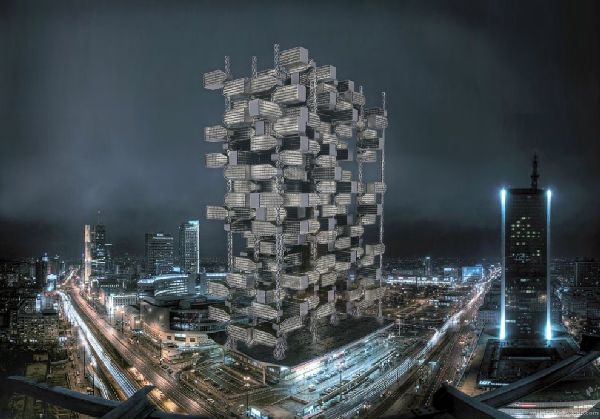
We have always believed that some of the best designs that come about are inspired by nature. Sure, science and technology can come up with some stunning pieces, but it is still hard to match 5 million years of evolution with a few hundred years of research and development. The best way forward is to synchronize both and combine the already developed design of nature with the advancements of science to create a magnificent tomorrow. The design of ‘World of Chlorophyll’ is another amazing example of bio mimicry at its scintillating best.
The design for the World of Chlorophyll was chalked up by IAMZ Design Studio. The proposed concept draws inspiration from the way trees capture sunlight and turn it into energy. The idea of the building the design is to create individual units that are much like the leaves of a plant in one giant structure with each unit getting the optimum sunlight along with green rooftops.
The concept building is a proposal that is still pending approval and if all is good to go then this amazing new architectural delight could take shape in the heart of New York City. And if it does materialize, it will be among the skyscrapers of New York that will be worth paying a visit to. The proposed structure will be largely a residential complex and with its access to sunlight, it can embrace solar rooftops.


